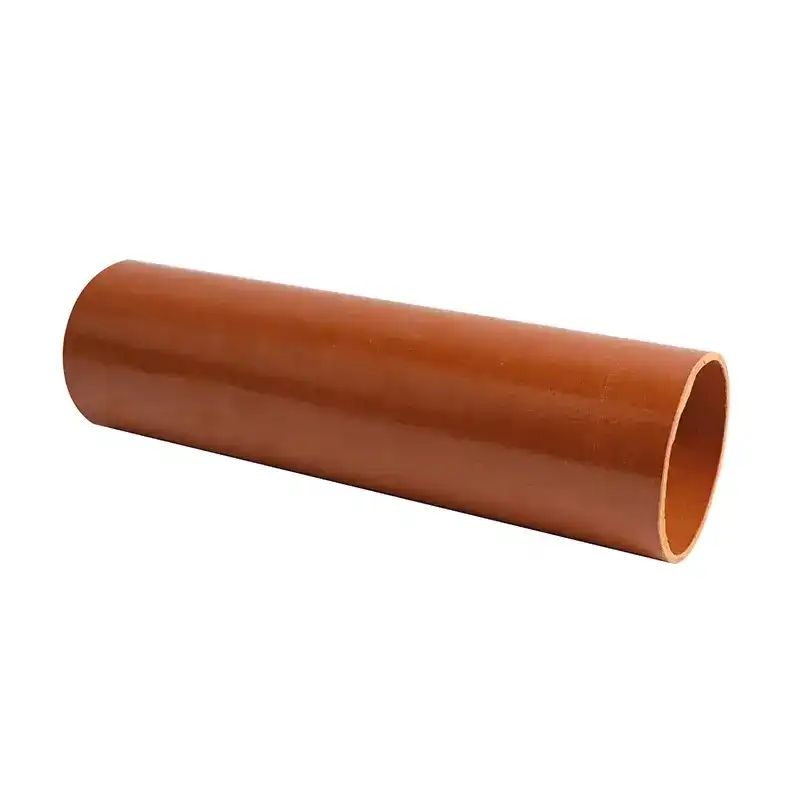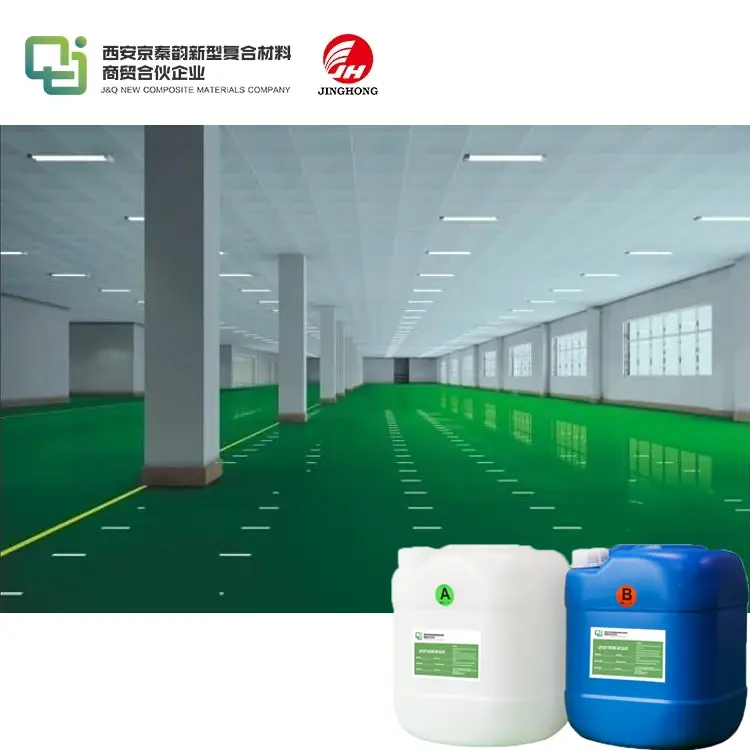How Are 3240 Epoxy Sheets Manufactured?
2024-07-22 14:15:11
Introduction
3240 epoxy sheets are necessary in different enterprises because of their fantastic mechanical properties and electrical protection capacities. Understanding how these sheets are made will help you better comprehend their widespread application and superior performance. This blog will examine the 3240 epoxy sheet assembly process, covering the fundamental steps from natural materials to final evaluation.
What Materials Are Used to Make 3240 Epoxy Sheets?
The quality and execution of 3240 epoxy sheets are essentially affected by the materials utilized in their assembling. The primary raw materials, their properties, and the ways in which they affect the sheets' overall quality will be discussed in detail in this section.
1. Epoxy Resin
The primary component of 3240 epoxy sheets is epoxy resin. It is a kind of polymer known for its great mechanical strength, compound opposition, and electrical protecting properties. Through a chemical reaction between epichlorohydrin and bisphenol-A (BPA), a thermostable polymer that hardens upon curing is produced for the resin.
Depending on the final product's desired properties, a variety of epoxy resins can be used. Additives to improve UV resistance, flame retardancy, or flexibility are just a few examples. The sheet's thermal stability, mechanical strength, and resistance to environmental factors are all affected by the epoxy resin used.
2.Fiberglass Fabric
The support material in 3240 epoxy sheet is commonly a woven fiberglass fabric. Fiberglass is the material of choice due to its high tensile strength, dimensional stability, and resistance to heat and chemical corrosion. The cloth is woven in a number of different patterns, such as plain weave, twill weave, and satin weave, each of which has different levels of mechanical properties and flexibility.
To improve the connection between the fiberglass and the epoxy pitch, a silane coupling specialist is applied to the fabric made of fiberglass. The subsequent composite material will have predominant toughness and strength thanks to this treatment. The type and density of the fiberglass cloth can be altered to meet specific requirements like greater flexibility or strength.
3.Curing Specialists and Impetuses
Relieving specialists and impetuses are fundamental in the assembling system of the product. The epoxy resin's curing reaction, which transforms it from a liquid to a solid state, is initiated and controlled by these chemicals. Normal restoring specialists incorporate amines, anhydrides, and synergist specialists like tertiary amines or Lewis acids.
The decision of restoring specialist influences the relieving time, temperature, and last properties of the products. Anhydride-based curing agents, on the other hand, provide superior thermal stability and chemical resistance, while amine-based curing agents typically offer quick curing times and excellent mechanical properties.
4.Fillers and Added substances
Different fillers and added substances can be integrated into the epoxy pitch to upgrade explicit properties. Mechanical strength and thermal stability are both improved by fillers like calcium carbonate, alumina, or silica. Added substances like fire retardants, UV stabilizers, and colorants can be incorporated to meet explicit application prerequisites.
To ensure that they do not adversely affect the properties of the finished product or the curing process of the epoxy resin, the proportion and type of fillers and additives are carefully controlled. The 3240 epoxy sheets' overall performance and durability can be attributed to the use of high-quality fillers and additives.

How Is the Laminating Process Conducted?
The overlaying system is a basic stage in the assembling of 3240 epoxy sheets. This segment will frame the means engaged with overlaying the fiberglass fabric with epoxy sap to shape a strong and solid composite material.
1.Preparation of Materials
The epoxy resin and fiberglass cloth must be prepared first in the lamination process. To achieve the desired properties, the resin is mixed precisely with the curing agent, fillers, and additives. After that, the mixture is degassed to get rid of any air bubbles that could break the final product's integrity.
The fiberglass fabric is cut into the necessary aspects and reviewed for any deformities or pollutants. The material is then treated with a silane coupling specialist to improve its holding with the epoxy pitch.
2.Impregnation of the Fiberglass Cloth
Various methods, such as hand lay-up, vacuum impregnation, or resin transfer molding, are used to impregnate the prepared fiberglass cloth with the epoxy resin mixture. In the hand rest up strategy, the sap is physically applied to the material utilizing rollers or brushes, guaranteeing even dissemination and careful immersion.
In vacuum impregnation, the fiberglass fabric is put in a vacuum chamber, and the epoxy sap is brought into the material under vacuum tension. This technique guarantees total impregnation and disposes of any caught air, bringing about a more uniform and deformity free composite material.
Sap move forming includes infusing the epoxy sap into a shut shape containing the fiberglass fabric. In large-scale production, this method guarantees consistent quality and provides precise control over the distribution of the resin.
3.Stacking and Pressing
Following impregnation, the epoxy sheet' desired thickness is achieved by stacking multiple layers of resin-saturated fiberglass cloth together. The stacked layers are then pressed under high pressure and temperature in a hydraulic press.
The squeezing system guarantees that the layers are combined into a solitary, strong sheet with uniform thickness and thickness. In order to achieve the desired mechanical and electrical properties and optimize the curing process, the pressure and temperature parameters are carefully controlled.
4.Curing and Post-Curing
During the curing process, the stacked and pressed sheets are heated to a predetermined temperature to start the chemical reaction between the epoxy resin and the curing agent. Depending on the resin and curing agent used, the curing temperature and time typically range from 60°C to 180°C for several hours.
After the underlying restoring, the sheets might go through a post-relieving process, where they are warmed to a higher temperature for a drawn out period. It gain mechanical strength, thermal stability, and chemical resistance from this additional curing step.
5.Cooling and Cutting
The products are allowed to cool to room temperature after the curing process is finished. After the sheets have cooled, they are taken out of the press and checked for any flaws or irregularities. To achieve the desired dimensions and surface finish, any excess material or rough edges are trimmed.
What Quality Control Measures Ensure the Reliability of 3240 Epoxy Sheets?
For 3240 epoxy sheets to meet the required standards and specifications, quality control is an essential part of the manufacturing process. The various quality control measures used during and after the manufacturing process will be discussed in this section.
1.Raw Material Assessment
Quality control starts with the assessment of unrefined substances. The purity, consistency, and conformity of the epoxy resin, fiberglass cloth, curing agents, and additives are evaluated. In order to avoid flaws in the finished product, any materials that do not meet the necessary quality standards are rejected.
2.In-Process Monitoring
During the assembling system, different boundaries are ceaselessly checked to guarantee consistency and quality. These parameters include the ratios of the resin mixture, the impregnation process, the conditions of stacking and pressing, the curing temperatures and durations, and so on.
Mechanized frameworks and sensors are in many cases used to screen these boundaries continuously, considering prompt changes in accordance with keep up with ideal circumstances. In-process checking distinguishes and address any issues that might emerge during creation, guaranteeing the nature of the epoxy sheets.
3.Mechanical and Electrical Testing
When the epoxy sheets are produced, they go through thorough mechanical and electrical testing to check their properties. Mechanical tests incorporate elasticity, flexural strength, influence obstruction, and hardness estimations. These tests guarantee that the sheets meet the necessary mechanical execution norms for their expected applications.
Electrical testing includes estimating the dielectric strength, protection opposition, and breakdown voltage of the epoxy sheet. These tests show that the sheets can be used in electrical and electronic applications because they provide the necessary electrical insulation and protection.
4.Thermal and Natural Testing
Warm testing assesses the epoxy sheets' presentation under raised temperatures and warm cycling conditions. These tests ensure that the sheets endure high temperatures and numerous heating and cooling cycles without affecting their properties or structural integrity.
The epoxy sheets' resistance to moisture, chemicals, ultraviolet light, and other environmental factors is evaluated through environmental testing. These tests guarantee that the sheets can withstand challenging environments and continue to perform over time.
5.Visual and Layered Assessment
Notwithstanding mechanical and electrical testing, the epoxy sheets go through visual and layered assessment to check their appearance and aspects. This examination incorporates checking for surface imperfections, like air pockets, breaks, or delamination, and estimating the sheets' thickness, width, and length to guarantee they meet the predetermined resiliences.
6.Final Quality Confirmation
Before the products are bundled and delivered, they go through a last quality confirmation survey. This review includes ensuring that the sheets adhere to the specified dimensions and appearance criteria and that all test results meet the required standards. The rejected or reprocessed sheets do not meet the quality standards.
Conclusion
The selection of high-quality raw materials and the implementation of stringent quality control measures are the crucial steps in the manufacturing process for 3240 epoxy sheet. Utilizing high-performance epoxy resin, which is reinforced with fiberglass cloth, in conjunction with precise lamination and curing procedures yields a material that is dependable, long-lasting, and has exceptional mechanical, thermal, and electrical properties. Because of these characteristics, our product is suitable for a wide range of industries, including the automotive, aviation, electrical, and gadget industries.
References
1. "Epoxy Resin: Material Properties and Applications" - ScienceDirect
2. "Composite Materials and Manufacturing Processes" - SpringerLink
3. "Dielectric Properties of Epoxy Resins" - IEEE Xplore
4. "Fiberglass Reinforced Plastics" - ASM International
5. "Thermal Curing of Epoxy Resins" - Journal of Applied Polymer Science
6. "Mechanical Testing of Composite Materials" - Elsevier
7. "Chemical Resistance of Epoxy Composites" - Industrial Engineering Journal
8. "Quality Control in Composite Manufacturing" - Composites Part A
9. "Environmental Testing of Insulating Materials" - Journal of Environmental Engineering
10. "Applications of Epoxy Sheets in Industry" - Industrial Applications Magazine







